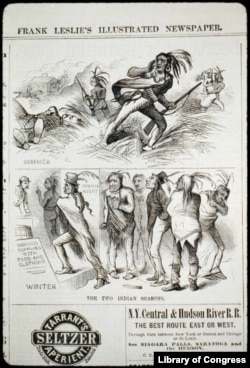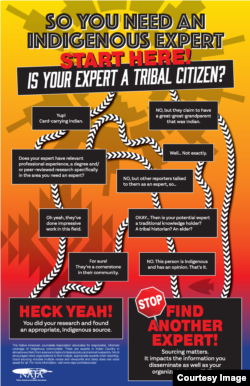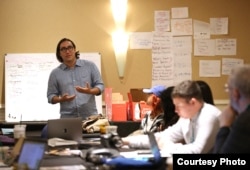A recent report confirms what Native Americans have always known: Most Americans know little, if anything, about American Indians, and what they do know is based on flawed narratives for which the mainstream media is largely to blame. At the same time, the report by the First Nations Development Institute and Echo Hawk Consulting (EHC) demonstrates media is poised to play an important role in dispelling misconceptions and helping to build new narratives.
The two-year “Reclaiming Native Truth” project was designed to study prevailing attitudes about Native Americans and explore ways to dispel stereotypes that restrict Natives’ access to jobs, justice and sovereignty guaranteed by treaty.
With help from Native American experts, researchers organized nearly 30 focus groups across 11 states and online, conducted in-depth interviews with political, judicial and business leaders, polled more than 13,000 Americans and analyzed social media. The resulting report, “Reclaiming Native Truth: A Project to Dispel America’s Myths and Misconceptions,” was released in June. Among its findings:
• Native Americans are largely invisible in contemporary society
• Non-Native media controls news about Native Americans
• Narratives about Native Americans focus on deficits, not strengths
• Stereotypes inform law, policy and decision-making
• Political elites don’t understand tribal sovereignty or U.S. obligations to tribes
“Most people said they didn’t know a Native American and had never interacted with one,” said Sarah Dewees, director of First Nations’ research, policy and asset-building programs. “And unfortunately, many people think that there aren’t many Native Americans left in America, which of course is not true.”
She points out that Americans juggle conflicting images of Indians, both positive and negative, with historic roots.
The study shows Americans hold dual and conflicting stereotypes of Native Americans: Both impoverished and wealthy from gaming casino earnings; spiritual but struggling with addiction and violence; sovereign and non-tax-paying but dependent on federal government benefits.
The latter, according to the report, is the most harmful because it alienates Native Americans from other communities by implying the government gives them preferential treatment.
The researchers agree: News media bears a responsibility for generating and perpetuating these stereotypes.
“’If it bleeds it leads,’” said Dewees, referencing media’s focus on bad news. “Most mainstream news stories about Native Americans focus on deficits, not positive developments in Indian Country. It’s harder to find an audience for ‘feel-good’ stories, but these are the stories that need to be told.”
The good news, say researchers, is that most Americans recognize Native Americans’ patriotism, high enrollment in the military, their commitment to family, community, culture and the environment. And they also admire tribes’ resilience in the face of adversity, specifically historic oppression and cultural genocide. The study says most Americans are willing to let go of misconceptions when given accurate facts, and that’s where the media can make a difference.
“I think one of the most obvious ways that mainstream media can improve their coverage of Indian Country is in careful sourcing of information,” said Bryan Pollard, president of the Native American Journalists Association (NAJA). “One of the things we see very consistently is that many non-Native journalists think that any Indian they talk to will be an expert on that community or that particular issue.”
He acknowledged that accessibility, particularly of remote rural tribes, may be a stumbling block, but insists this doesn’t excuse journalists from an ethical responsibility to reach out.
He also stresses the need for journalists to provide context in covering Native issues.
“Most people do not understand that each tribe has its unique history, its own culture, and its own story of what has brought that tribe to where it is today,” Pollard said. “It helps to frame those issues within a historical context and help people understand their struggles under the pressures of colonization.”
The American Society of News Editors has campaigned for decades to promote greater diversity in news media, but recent data show minorities remain underrepresented in newsrooms. Native American journalists make less than two-tenths of one percent of the mainstream media population, a statistic that Pollard calls “egregious.”
As part of the Reclaiming Native Truth project, NAJA has published a guide to help non-Native journalists improve their coverage of Indian Country. It is also collaborating with EHC to develop a national campaign to increase awareness of and respect for Native Americans.
The “Reclaiming Native Youth” project was funded by a $2.5 million grant from the W.K. Kellogg Foundation, as well as several foundations and tribes.









